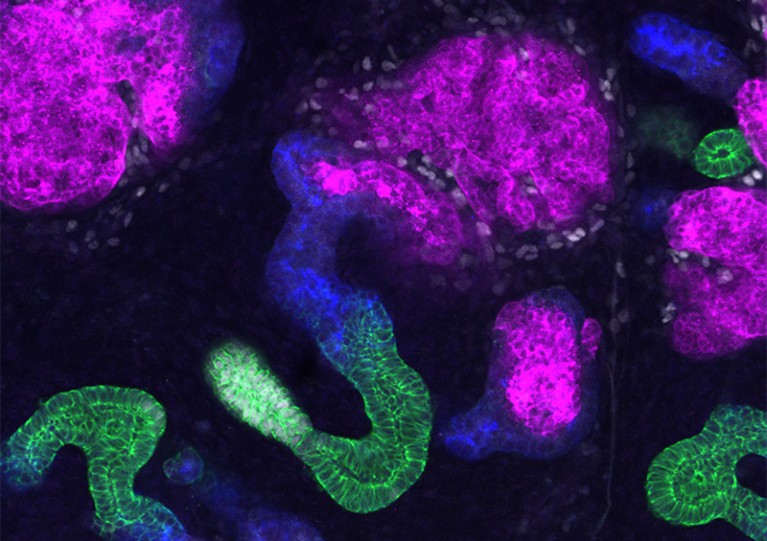Hello Nature readers, would you like to get this Briefing in your inbox free every day? Sign up here.

Maria Haverstock, a participant in the Oakland study, became homeless at 58 when she could not find work after leaving an abusive partner. Credit: Preston Gannaway for Nature
The devastating biological consequences of homelessness
Older homeless adults seem to age at hyper-speed, facing strokes, falls, visual impairment and neurological disease earlier in life than the general population. Stress, extreme loneliness and lack of sleep are just some of the factors contributing to this decline — and understanding them better could save lives and money. At the University of California, San Francisco, in a city where the problem of homelessness is particularly acute, researchers are working to understand the biological consequences of living on the street.
NASA Moon plan: 37 launches and a lunar outpost
NASA’s plan to return to the Moon entails 37 launches of private and NASA rockets, including a human landing in 2024 and the deployment of some kind of Moon base in 2028 — all according to an internal NASA document acquired by Ars Technica. The plan, marked “predecisional”, does not note the projected cost of the outings, and there has been controversy over a government plan to raid the Pell Grant programme, which supports low-income students, for the money. The rapid pace of the plan will come as no surprise to those who heard NASA administrator Jim Bridenstine speak in Washington DC last week: “We want to be there, no kidding, by 2024.”
Read more: First private Moon lander heralds new lunar space race (from February)
Sea levels could rise much higher
If we don’t act to stop the climate crisis, global sea levels might rise by as much as 2 metres by 2100 — more than twice the upper value put forward by the Intergovernmental Panel on Climate Change — according to a study based on expert opinions. Study authors asked 22 scientists active in ice-sheet and sea-level-rise research to make predictions on the basis of their knowledge and understanding of what’s happening in Greenland and the Antarctic. The chance of reaching the 2-metre scenario is only around 5% — but that’s enough, says lead author Jonathan Bamber. “If I said to you that there was a one in 20 chance that if you crossed the road you would be squashed you wouldn’t go near it.”
FEATURES & OPINION
How China will protect one-quarter of its land
China has drawn unbreachable “red lines” around valuable ecosystems — including 28,995 square kilometres of land around the Yangtze River delta — to protect them from industrialization and urbanization. The initiative indicates a national shift towards an “eco-civilization” that other nations could learn from, says its architect, environmental scientist Jixi Gao.
Big questions about small life on Earth
“Imagine it is 2100; we are in the middle of the predicted planetary crisis and you are a microbiologist, concerned with the question as to what a ‘healthy’ microbiome of planet Earth did look like, and how to preserve that knowledge. Where would you turn to?” asks geomicrobiologist Antje Boetius. She argues that we must understand the planet’s global microbiome and how it is changing in order to create a sustainable future on Earth and even to colonize other planets.
Nature Reviews Microbiology | 7 min read
NATURE INDEX 2019 BIOMEDICAL SCIENCES

Organoids mimic the early stages of major organs and tissues.Credit: Pamela Kairath Oliva/MCRI
People power unlocks biomedical potential
Biomedical research has helped global average life expectancy to rise by 20 years since 1960. Meet the scientists and institutions who are prominent in the ongoing effort to further transform human health in the coming decades.
• At the Estonian Genome Centre, geneticist Lili Milani and her team are investigating the impact of genetic variations on drug metabolism and adherence to prescriptions.
• From organoids to CRISPR-Cas9, Cas13 and Cas12a (also known as Cpf1), discover the most intriguing technologies to emerge in the biomedical sciences.
• As stem-cell therapies hit the market and gene-editing challenges the bases of congenital disease, ethical and equity concerns intensify.
